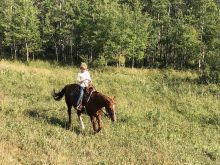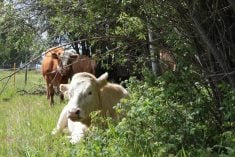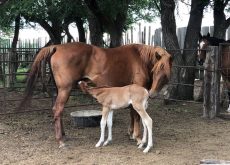During the second week of January, Alberta packers were buying fed cattle on a dressed basis at an average price of $312/cwt delivered, up $8-$10/cwt from mid-December. The backlog of market-ready supplies is slowly being alleviated, which has caused the fed cattle basis to strengthen.
Western Canadian carcass weights are now below year-ago levels. Wholesale beef prices were holding value in early January as beef demand continues to exceed expectations. It appears that Canadian and U.S. economic output in the first quarter of 2023 will be better than earlier forecast.
Feedlot margins continue to hover in red ink for January and February but appear positive for March through June. Western Canadian yearling prices jumped $6-8/cwt in early January, while calf prices surged $10 to as much as $15/cwt. In eastern Saskatchewan, higher-quality 900-pound steers were trading up to $24/cwt during the first couple weeks of January. Larger-frame Charolais and Angus steers were selling in the range of $255-$260.
Read Also

Rodent showdown: how one squirrel evicted the mice from my henhouse
Discover how a single red squirrel helped one farm eliminate mice from the henhouse, greeenhouse and garage. Practical rodent management insights.
Cattle-on-feed inventories in Alberta and Saskatchewan on Dec. 1, 2022 were 1.158 million head, down three per cent or 37,200 head from Dec. 1, 2021. Placements during September through November in the heavier weight categories were similar to year-ago levels. It appears that cattle-on-feed numbers in Alberta and Saskatchewan during the first quarter of 2023 will be similar to year-ago levels.
U.S. cattle on feed for slaughter in feedlots with capacity of 1,000 or more head totalled 11.673 million head on Dec. 1 ,2022. This was also down three per cent or 312,000 head from Dec. 1, 2021. U.S. feedlot placements from September through November 2022 were 6.110 million head, down 4.2 per cent or 266,000 from the same period in 2021. This will result in lower beef production during the first half of 2023. At the same time, Alberta and Saskatchewan exports of fed cattle to the U.S. should increase sharply. The U.S market needs to attract fed cattle from Western Canada to reach the beef production estimates below. This will also contribute to a stronger Alberta fed cattle basis during the second quarter.
Fewer cattle for slaughter
In addition to lower heifer and steer supplies, the U.S. beef cow slaughter will be down sharply from a year ago. For the first half of 2023, I’m forecasting the U.S. beef cow slaughter to finish near 1.2 million head, down 800,000 head from the same period of 2022.
The USDA forecasts first-quarter beef production to come in at 6.7 billion pounds, down 300 million from the first quarter of 2022. Second-quarter production for 2023 is expected to also finish 6.7 billion pounds, down nearly 380 million from the second quarter of 2022.

During the third and fourth quarters of 2023, beef production will have a year-over-year decline of nearly 600 million pounds during each quarter.
Given the sharp year-over-year decline in beef production, the function of the feeder market is to encourage expansion. This will result in a volatile market moving forward. We mentioned that the cow slaughter will be down sharply from last year. We are also expecting significant heifer retention in the latter half of 2023. This heifer retention comes on the heels of four consecutive year-over-year decreases in the U.S. calf crop. I also expect a sizeable year-over-year increase in heifer retention in Western Canada. Canadian feeder cattle prices are near historical highs.
Cows for slaughter jumped $7 to $10/cwt during the first week of January. Bred cows were relatively unchanged compared 30 days earlier. Good-quality bred cows in Western Canada were still trading in the range of $1,500-$1,900 during the second week of January. Higher-quality genetic steer calves weighing 500 pounds were selling for as high as $330/cwt or $1,650. These cows could be paid for in two years. At this stage, we’re expecting western Canadian precipitation levels to be average during the spring and summer of 2023. There should be no shortage of forage in Western Canada this year. (Look back at 2005 as an indication for western Canadian precipitation.)
As of mid-January, the March feeder cattle futures were trading at $183 while the October 2023 feeder cattle contract was near $208. The October contract is trading at a $23 premium to the nearby March contract. Calves in Western Canada have been trading at a small premium to major markets in the U.S. However, during the fall, western Canadian feeder cattle prices could be up $15-$20/cwt from current levels.
Alberta fed cattle prices were hovering at $312 dressed or $187 live. During April, I would be surprised to see Alberta live cattle prices move up to the range of $215-$220 and dressed prices at $365. The positive feeding margins will also support the feeder market.
















